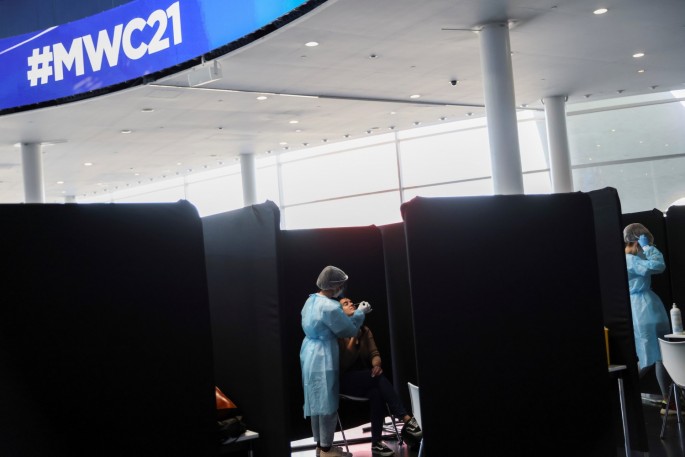Next month's Mobile World Congress (MWC) in Barcelona is shaping up as an early test of how quickly the global business events industry will bounce back from the pandemic, with a range of hi-tech solutions being rolled out to try to keep visitors safe.
The normally annual event - which was cancelled last year - is one of the world's biggest industry conferences, typically attracting around 100,000 attendees as telecoms companies show off their latest products and executives meet to do deals.
While organisers will offer online access for people who want to stay away, they are hoping to welcome thousands of attendees from across the world, including from countries where the pandemic is still raging.
There will be regular rapid COVID-19 tests, a digital badge that will give access to the venue, and a contact-tracing app if there are any infections.
Live monitoring of the site will allow organisers to regulate the number of people in any given area, while attendees will have to wear face masks and keep to one-way routes.
"We feel now is the time to resurface again and to do a comeback show, while knowing that it's not going to be the same type of show as before, but it's at least a start," said Mats Granryd, director general of telecom carriers association GSMA, which organises the MWC.
The Spanish government is on board. It has agreed to special arrangements to allow attendees from countries where travel restrictions are still in force. Spain itself reported 33 COVID-19 deaths on Friday, the lowest figure since August.
But holding the event remains a gamble for the GSMA. Major companies including Nokia, Ericsson and Samsung won't be attending in-person, and attendance is expected to be less than half the 100,000 of a normal year.
"Talking to people in the industry, there is a real desire to get back to physical events, but it is all about timing," said Ben Wood, chief analyst at CCS Insight. "We'll find out in coming weeks whether the GSMA has made the correct decision."
Cancellation of last year's event was a big blow for the GSMA and forced it to lay off about 40% of its employees. Sub-par attendance, or another cancellation, would mean more pain.
A successful show, on the other hand, could offer a model for other event organisers looking to get their businesses back on track.
FACE-TO-FACE
The GSMA decided in mid-January to go ahead with the MWC in Barcelona, with a rescheduled February event in Shanghai as a warm-up.
"Shanghai was in a way a test bed. Is it possible to have a big show with face masks, with social distancing, with testing beforehand? It was, and we had zero cases," Granryd said.
"It was really after Shanghai, I think, we felt confident that we are able to pull it off."
About 25,000 people attended MWC Shanghai this year and more than 100,000 watched presentations online. That was one of the GSMA's first hybrid events, with online and in-person access.
The MWC's online platform will be integrated with Microsoft products, allowing attendees to connect in video conference meeting rooms.
But sometimes there is no substitute for face-to-face meetings, Granryd said.
"We can build trust to some extent over virtual meetings, but not if it's a deal worth billions, then you need to sit down and look each other in the eye, and that is the reason why we feel confident that this will be something," he said.
GRABBING THE LIMELIGHT
While some worry the absence of big names will reduce the conference's appeal, smaller companies are looking to grab the limelight. Over 400 startups will exhibit their latest products at the MWC.
"This is an unique opportunity for the smaller vendors to rise up and get their message out and maybe become a big vendor in the future," said Danielle Royston, founder of cloud consultancy firm TelcoDR.
Royston scooped up one of the biggest exhibition stands, measuring 6,000 square metres, after Ericsson pulled out.
TelcoDR, which got the stand at a reduced rate but still paid millions of dollars, will have 30 startups which it advises and/or invests in showcasing their products at the booth.
"This is your chance as a small vendor," she said. "We go back to the old way, next year."



























